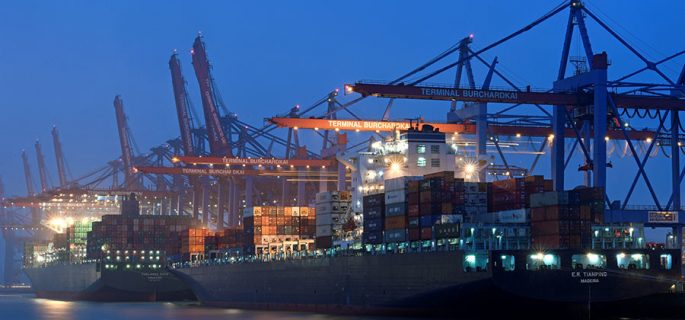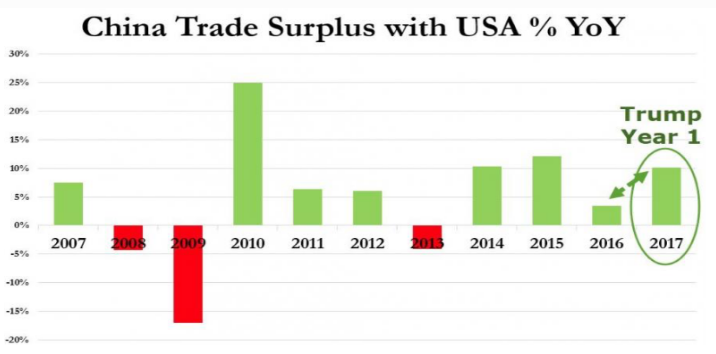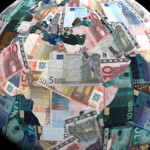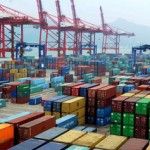The truth about trade

The one subject, which became a headline issue last year, and even divides experts is trade. It will become increasingly important in 2018 as the US develops her trade policy, particularly with respect to China, and as the UK negotiates her Brexit terms with the EU.
Ignorance dominates this subject. Surely, people say, industry should be protected from unfair trade practices, such as goods manufactured in foreign sweat-shops, or unfair dumping of commodities, such as steel. If President Trump can protect American business from unfair competition, it would be good for the American economy. Then there’s the business of currency rates. Doesn’t a lower currency help restore the trade balance, by making exports cheap, and imports expensive? And surely, Britain leaving the EU risks trade tariffs being set up against British business. This means sterling must fall against the euro to rebalance trade.
These are all misconceptions, disproved by verifiable history. Why was it that before the euro, German export surpluses persisted, despite a rising mark, and why is it that after joining a weaker euro, her surpluses have not increased significantly further? And why did Japan, like Germany, also have a strong currency from the 1960s onwards and a persistent trade surplus? Why did Britain in the post-war years have a continual trade deficit despite a falling currency? And why was it that American trade protectionism intensified the depression in the 1930s?
The answers to these questions are relevant today to the development of both US trade policy and post-Brexit trade policy. It is no coincidence that trade imbalances have only become a significant feature since fiat currencies replaced the sound money disciplines of gold.
The purpose of this article is to tell the truth about trade, by addressing the relationship between trade imbalances and exchange rates, and to expose the harm caused by the imposition of tariffs.
Why trade imbalances cannot persist with sound money
The most common mistake made by neo-Keynesians and the broader commentariat is that a trade deficit can be fixed through a lower exchange rate. This flies in the face of all empirical evidence, yet the myth persists. The error is in ignoring the consequences of monetary expansion in an economy of relatively fixed productive capacity. But first, in the interests of understanding why monetary expansion leads to trade deficits, we must establish money’s role in an economy.
Money is the temporary bridge between production and consumption in all economies which are based on the division of labour. What we mean by this is all economic actors, including businesses, employed and self-employed people, produce something with their specialist skills or labour, so that they can buy all the other things they need and want. The unemployed, who do not take part in production, are subsidised by others, either by their families or by the state, so their missing production is always covered by the surplus production of someone else.
All economic actors make the default assumption that money is basically sound for the purpose of their transactions, even if it’s a state issued currency. This is despite the common knowledge that in the long run its purchasing power changes. It is a precondition for a currency’s validity to facilitate the conversion of production into consumption, and as the basis for keeping accounts.
Consumption is either immediate, the buying of day-to-day items, or deferred. Deferred consumption is another way of describing savings and the retention of cash liquidity, whose roles are described later in this article. All of us, as individuals, run personal trade surpluses or deficits between our productive output and our spending, the difference being made up by changes in our cash balances, and our overall levels of savings. When we consider groups of people, whether they be the population of a town, city, region or even a country, what holds for us as individuals is also true in the broader aggregated sense.
This was obvious to classical economists, particularly when gold was money, and currency and bank balances were, for the purpose of economic theory, fully backed by gold. Different communities and countries, being a mass of individual actors, would always settle their trade with other communities and countries with sound money, the gold or fully-backed substitutes that they would have to hand.
Variations in trade balances tended to be relatively minor, and could never constitute a trend, because no one could spend beyond their means for long, and people always needed to retain a cushion of liquidity and savings. What happened at the macro level reflected the micro, because both were, and still are, governed by the same basic rules.
Admittedly, communities using sound money, including those defined by national boundaries, can have different standards of living, savings habits and monetary requirements. This does not directly affect the overall trade balance between them, because of payment constraints. But the effect on the split between deferred consumption and current consumption must also be addressed.
Other than the holding of cash liquidity, deferred consumption is the allocation of profits and income to savings, which through banks and financial markets are made available to producers who use them to finance the factors of production. And when a business acquires its productive capacity, be the components sourced locally or from outside its community or country, with sound money it has to pay for them, just like anyone else buying goods and services.
A community or country that increases its direct consumption by reducing its allocation to savings will restrict its own productive capacity. By constraining capital available for production and diverting savings into extra consumer spending, imports relative to exports are bound to rise. This is why differentials in savings rates between trading partners can lead to significant trade imbalances if allowed to persist, which is currently the cause of China’s surplus with the US.
Between sound-money economies, there is in practice a strict limit to the diversion of savings into direct consumption. When capital becomes scarce, interest rates adjust until a new balance is found. If savings levels in one country relative to another change, in a purely market-based, sound-money economy these must be restricted to relatively minor short-term fluctuations and can never be a continuing trend, because of the limiting factors. Therefore, a persistent trade imbalance cannot arise.
Unsound currency changes everything
In an economy where commerce and prices are corrupted by fiat currency, it is very different. The shortage of capital that follows from a decrease in savings and an increase in consumption is covered by the expansion of bank credit. In other words, money is conjured out of thin air, supplanting the corrective forces of the sound-money free-market regime described above. Because the productive capacity of the economy takes time to adjust to the introduction of this additional currency, excess demand arising from monetary expansion is bound to lead to a surge in imports.
Eventually, an increase in the quantity of fiat money in an economy can be expected to lead to an increase in production over time as the economy adjusts. The factors for this extra production will take time to be assembled, leading to increased demand for imported raw materials and other items that cannot be easily sourced domestically, without bidding up prices. So, whether the increase in fiat currency is taken up by consumers or producers, putting the savings issue to one side, the consequence is always a tendency towards an increase in imports over exports.
In a modern fiat-currency economy, there’s the additional factor of capital flows unrelated to trade settlements to consider. Businesses and governments often finance their imbalances by borrowing from abroad. The extent to which central and commercial banks accommodate inward investment flows through monetary expansion must lead to excess domestic demand over available production, tending towards a trade deficit.
Other things being equal, a government budget deficit also translates into a trade deficit. Government deficits are funded either domestically, from foreign investors, or by pure monetary expansion. We have addressed capital inflows from foreign investors in the preceding paragraph. With respect to domestic debt funding, monetary analysts make a distinction between government debt funded from existing savings, and by the expansion of bank credit.
Bank credit expansion is direct monetary inflation. Drawing on existing savings to fund government spending is deflationary, until the money is spent back into the economy, so in practice, a central bank will make replacement currency available through the financial markets. So, to all intents and purposes, the origin of the money for domestic purchases of government debt is immaterial, in that it is basically inflationary. Alternatively, the central bank simply expands base money through mechanisms such as quantitative easing to acquire government debt.
As already shown, the additional demand in the domestic economy generated from monetary expansion tends towards an increase in imports over exports. This is why the twin deficit phenomenon, the coexistence of trade and budget deficits, is so frequently observed.
Therefore, trade imbalances have little or nothing to do with the existing exchange rate. Obviously, when a fiat currency issuer runs a trade deficit, the increased quantity of its currency relative to the lesser increase of the quantity of another fiat currency will tend towards a decline in its exchange rate between them. The decline of the exchange rate is the symptom of excess currency issue leading to a trade deficit: it is not the cure. And that’s why a lower currency rate does not resolve trade deficits.
The consequences of tariffs
The basic message is trade deficits can only arise from monetary expansion, which apparently is no longer understood by today’s macroeconomists. Instead, a modern understanding of trade and trade imbalances takes note of history, and in this respect the Smoot-Hawley debacle of the 1930s is paramount. However, the basic links that must tie economics at the micro level in with the macro are ignored, in the belief that human behaviour in the aggregate differs from that of individuals. In a nutshell, the underlying cause is the dismissal of Say’s law.[i]
What has become to be named Say’s law is the recognition that as individuals, we divide our labour, so we must first produce to subsequently consume. And as groups of individuals and businesses, our aggregate production is the precondition for our aggregate consumption.
Businesses invest in production and have to carry costs over the time it takes to produce their goods or services, and then sell them. Other than the time element between planning and establishing production until goods and services are finally produced and sold, production balances the sum of consumption and deferred consumption, the latter providing the capital necessary for production. In his General Theory, Keynes discredited Say’s law by firstly defining it incorrectly (supply creates its own demand, a false definition still quoted to this day)[ii], and then goes on to allege that those that believe “an act of individual saving inevitably leads to a parallel act of investment” are suffering “from an optical illusion”.[iii]
Really? Where else did Keynes have us believe savings were deployed? Are they just held on a bank’s balance sheet, a liability to the bank merely funding cash as an asset, while the bank pays the saver interest? Anyone in the real world knows that to be poppycock. It is also ludicrous to take the view that people store up cash beyond their liquidity needs, unless state instigated policy causes them to do so. Yet this was the whole basis for the separation of the new science of macroeconomics from classical economics.
This leaves us with a problem. By abandoning Say’s law, the whole macroeconomic establishment has embarked on a path that leads to a dead end. It has lost its way to understanding why trade imbalances occur. Economists are now unable to make the connections. They only know from the disastrous Smoot-Hawley Tariff Act of 1930, which increased tariffs on some 20,000 imported items, that tariffs can backfire. And they also know that cross-border trade is an important part of global GDP, something they do not want to see diminish. But as to the real reasons how deficits arise, they appear to be clueless.
This lack of intellectual rigour leads the economic establishment into believing a trade balance can be rectified through an adjustment of the exchange rate. All we can say about manipulating a currency lower in an attempt to boost exports relative to imports is that one class of businesses is being favoured over the others, a benefit that lasts only as long as the markets take to adjust prices upwards in the devalued currency. And don’t tell the troops: devaluation is specifically aimed to lower wage costs, or put another way, the purchasing power of what workers earn, without them noticing.[iv]
Why cheap foreign goods are beneficial to an economy
In formulating trade policy, politicians are driven by lobbyists and macroeconomic analysis. The true beneficiary of free trade, the consumer, is not represented in this debate. We have addressed the errors of macroeconomics, now we must turn to the lobbyists. Lobbying for trade tariffs and import restrictions are the preserve of business, usually big businesses. They play the nationalism card, arguing that foreign competition is bad for the country and leads to unemployment in domestic industries.
You cannot slip a thin sheet of paper between the fallacies behind modern protectionism and those of the disastrous Smoot-Hawley Tariff Act of 1930. It is only a question of degree. Where Smoot-Hawley did so much harm, as protectionism does today, is through tariffs applied not only to imported consumer products, but to imported raw materials, semi-manufactured goods and capital equipment as well.
It wasn’t long before American industry began to seize up in the 1930s. Bank credit was contracting, banks were failing, but money was sound, and anyone could demand gold for dollar deposits, at least until 1933. When domestic prices were artificially supported through import tariffs and other price maintenance policies, unemployment increased to levels never seen before. Products remained unsold. Put another way, the purchasing power of gold rose, a fact formally recognised in the dollar’s devaluation of 40% to $35 per ounce in January 1934, and also by the earlier banning of gold ownership for American citizens.
Furthermore, Smoot-Hawley provoked protectionist responses from America’s trading partners, which killed many export markets for American enterprises. It is no exaggeration to say this was the single most damaging piece of American legislation in the inter-war era. Even before Smoot-Hawley, tariffs were high, averaging about 40% on dutiable goods. The slump in trade following the introduction of extra tariffs is estimated to have reduced tariff revenue to the government overall and was a major factor in cutting world trade from $5.3bn in 1929 to less than $2bn in 1933.
Have we learned the lesson of import tariffs? Unfortunately, in democracies driven by lobbying interests, the answer is an emphatic no. Competition gets classified as unfair, or even as dumping, accusations both easy to make and conveniently emotive. For example, when Chinese steel is cheap, the market needs to be cleared. Someone is going to benefit from bargain prices, so why deny this to your own citizens and businesses? You may in the short-term protect your own nation’s steel mills by imposing high tariffs on steel imports, but you disadvantage your businesses downstream, in the motor industry and in all manner of heavy and light engineering manufacturing, because foreign competitors will still have access to the cheaper steel. And if higher prices cannot be passed on to consumers, unemployment results.
The benefits of tariff-free trade
So far, we have shown why a weakening currency is a consequence of trade deficits, and not a cure for them. By comparing the workings of a sound money economy with today’s fiat currency economy, we have identified the expansion of money as the root cause behind trade deficits, and we have revealed that tariffs are no solution and are economically harmful. It is now time to look at the positive aspects of free trade.
The best empirical evidence comes from the UK, after the Corn Laws were finally repealed by Robert Peel in 1846. The effect was to reduce wheat and flour prices, which particularly benefited the poor. It meant that factory wages went that little bit further, creating demand for other goods, which in turn led to increased employment in manufacturing.
Peel became Prime Minister in 1841, faced with war in China and Afghanistan, and strained relations with America and France. At home, there was agitation from Ireland for independence, the Chartists’ workingmen’s reform movement, and an accumulation of budgetary deficits. The similarities facing Britain today are remarkable. But at least Peel had a reasonable majority in the Commons, which Theresa May unfortunately lacks.
Besides reintroducing a modest income tax, Peel made sweeping reductions on duties on food and raw materials entering the country, finally removing them altogether. He had been persuaded by the Anti-Corn Law League that the removal of all tariffs would substantially benefit the ordinary person, and so it proved. Tariff-free trade improved the standard of living of the ordinary person and allowed businessmen and entrepreneurs to create personal wealth through the establishment of new enterprises. The agitation of Chartists and other malcontents died down as working and living conditions improved.
France followed the British example, removing all her trade tariffs in 1860. As the French economist Frederic Bastiat put it, tariff-free trade leads to
“an abundance of goods and services at lower prices; more jobs for more people at higher real wages; more profits for manufacturers; a higher level of living for farmers; more income to the state in the form of taxes at the customary or lower levels; the most productive use of capital, labour, and natural resources; the end of the ‘class struggle’ that was based primarily on such economic injustices as tariffs, monopolies, and other legal distortions of the market; the end of the ‘suicidal pol- icy’ of colonialism; the abolition of war as a national policy; and the best possible education, housing, and medical care for all the people.”[v]
Quite. This is the opposite of all the establishment advice that tried to scupper Brexit and persists in doing so to this day.
From our analysis of how trade deficits actually arise and the negative economic effects of tariffs, we know that Brexit should be a clean break with the tariff-ridden EU and that the removal of all tariffs is the best outcome. All product regulations, other perhaps than those that concern health and safety, are unnecessary and should be repealed because they hamper the market. Britain can then replicate her remarkable economic progress of the second half of the nineteenth century in a modern context. Furthermore, as Bastiat pointed out in the extract above, the Treasury can expect to see higher tax revenues as a result, curing Britain’s persistent budget deficit.[vi]
Turning to America, we know that if President Trump introduces new tariffs on imported goods, it will be to the detriment of the economy. Instead of following a sensible, tariff-free course, America is now poised to start a trade war with China. The following chart, published by Zerohedge, illustrates the political motivation.

We know, from our analysis, that the cause of America’s trade deficit is partly due to excess spending by the government over its tax receipts. Furthermore, Trump’s tax cuts will enlarge the budget deficit even further, at least for the foreseeable future. Trade deficits with America’s trading partners overall are therefore bound to increase, and if Chinese imports are selected for punitive tariffs, they will simply be substituted for imports from elsewhere.
It seems likely that Trump’s errors in matters of trade could lead to an escalation of protectionist measures by America, and not a diminution of the overall trade deficit. The effect will be seen in higher consumer prices for Americans, and higher prices for the factors of production. And as has been explained earlier in this article, the consequence will be a falling dollar relative to other currencies.
Nothing could be more wrong-headed. Such a policy seems certain to undermine the American economy, at a time when the geopolitical imperative is to increase trade and ensure the dollar continues to be the trade settlement currency of choice.
In contrast, China, which is equally guilty of monetary debasement, has a population that saves a substantial portion of its profits and earnings. China’s latest recorded gross savings rate was over 40%. What this means is credit expansion is aimed at production and not consumption. Productive capacity keeps pace with domestic consumption better, and while expanding production leads to the importation of raw materials and other production goods, the expansion of credit does not lead to trade deficits to the same extent as in a consumption-driven economy. Furthermore, a significant portion of total savings is earmarked for the accumulation of domestic wealth, such as property, the construction of which is predominantly a domestic affair.
There is no doubt that China’s savings habits relative to that of the US, which is only about 5%, is the principal factor behind China’s surplus on trade with America, given both countries run budget deficits (though America’s is larger in nominal terms), and both countries have stimulated their economies by expanding bank credit. And indeed, the strength of Germany’s and Japan’s trade surpluses in the past were for the same reason.
[i]Jean-Baptiste Say, French economist, 1767-1832
[ii]Keynes, General Theory of Employment, Interest and Money, Palgrave, page 18.
[iii] Ibid page 18
[iv] The classic example of this was the British devaluation of 1967, when the Prime Minister, Harold Wilson, told the nation on television that “From now on, the pound abroad is worth 14% less in terms of other currencies. It didn’t mean of course the pound here in Britain, in your pocket, your purse or your bank account has been devalued”.
[v]Economic Sophisms, Frederic Bastiat, translated from the French (Irvington-on-Hudson, N.Y.: Foundation for Economic Education 1966).
[vi] The revenue benefit is denied by all establishment economists. This was the basis of Project Fear, whereby the UK’s Office for Budget Responsibility, the Bank of England, the IMF and the OECD all concluded that Brexit would lead to a drop in economic growth and therefore a drop in tax receipts.
By Alasdair Macleod, www.goldmoney.com
Find more: Contributing Authors






























Ich beschäftige mich als Bitcoin-Enthusiast seit mehreren Jahren mit dem Phänomenen Kryptowährungen. Nachdem ich in letzter Zeit immer häufiger von Freunden und Bekannten gebeten wurde, ihnen zu zeigen, wie man Bitcoin kauft, möchte ich nun auch Ihnen dabei helfen.